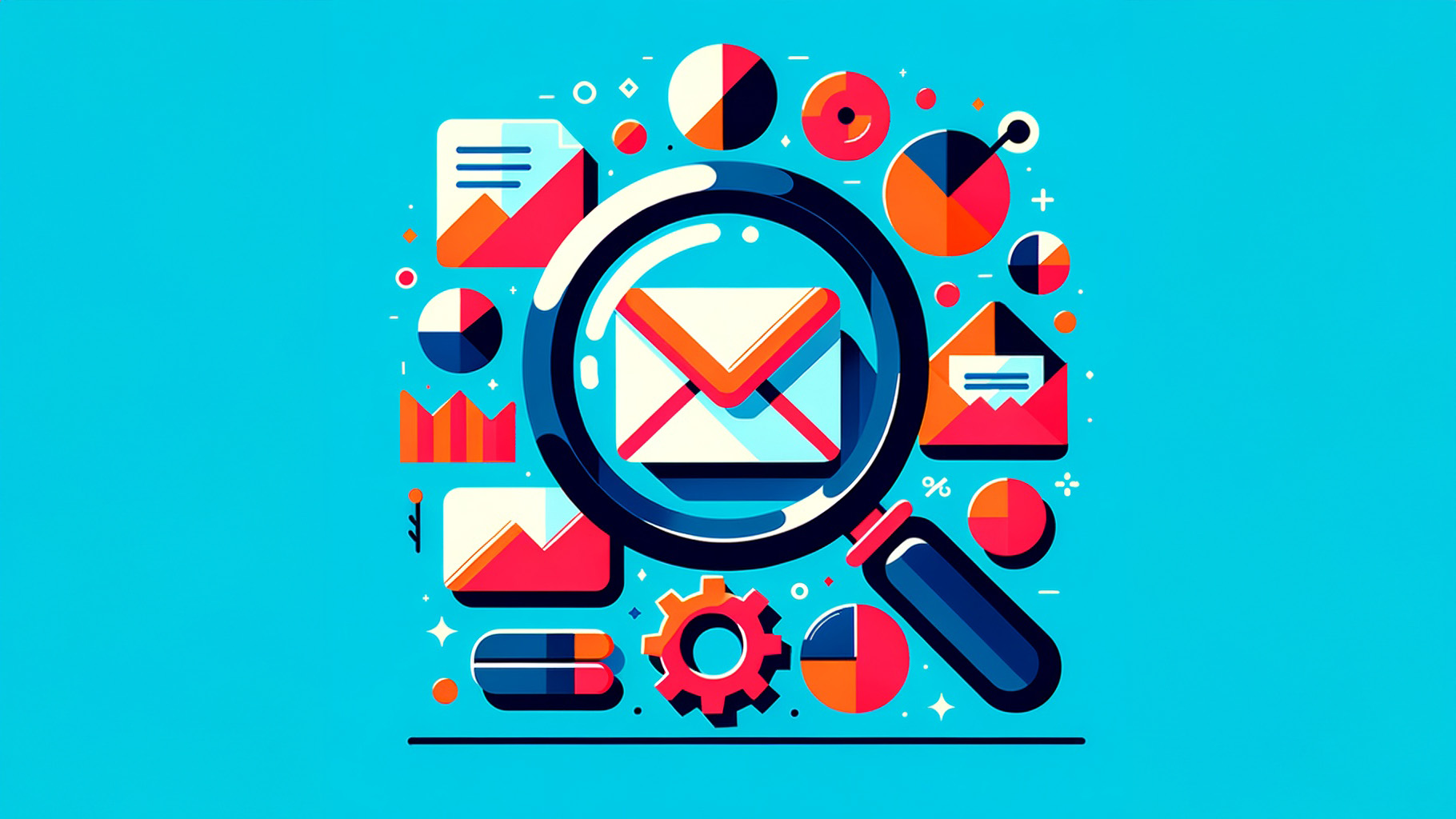Email Marketing Metrics That Matter: How to Decode Open Rates, CTR & Real Results
Posted on Tuesday November 28, 2023

In the ever-evolving digital marketing landscape, email marketing remains a linchpin for businesses aiming to foster meaningful connections with their audience. As we delve into the realm of email marketing, it becomes imperative to demystify the key metrics that define success in this space. Let’s explore how understanding and optimizing metrics such as Open Rates (OR), Click-Through Rates (CTR), and others can propel your email marketing endeavors to new heights.
Email Marketing: A Pillar of Digital Success
Email marketing has withstood the test of time as a powerful and cost-effective tool for businesses. According to a recent study by Statista, the number of global email users is expected to reach 4.73 billion by 2026, highlighting the continued relevance of email in our digital lives. As businesses vie for attention in crowded online spaces, leveraging email marketing metrics becomes crucial for crafting campaigns that resonate with the audience.
Understanding Email Marketing Metrics
Defining the Metrics that Matter
Email marketing metrics encompass a spectrum of measurable data points that offer insights into the performance of your campaigns. From the moment an email is sent, metrics come into play, providing valuable feedback on engagement and conversion. Understanding the language of these metrics is fundamental to optimizing your email strategy.
Metrics serve as the pulse of your email campaigns. Tracking them allows you to gauge the effectiveness of your strategies, identify areas for improvement, and refine your approach.
Key Email Marketing Metrics Explained
Open Rate (OR): Unlocking Email Engagement
The Open Rate (OR) is a fundamental metric that measures the percentage of recipients who opened your email. Calculated by dividing the number of unique opens by the number of delivered emails, it provides insights into the initial engagement with your content. The average Open Rate across industries is 21.33%.
A high Open Rate indicates that your subject lines and preview text are compelling, encouraging recipients to explore the content within. It serves as a barometer of your audience’s interest and receptiveness to your messaging.
Tips for Improving Open Rates
- Create subject lines that are concise, relevant, and evoke curiosity. Subject lines with 6-10 words have the highest open rates.
- Personalize your emails by addressing recipients by their names. Personalized emails have a 29% higher open rate.
Click-Through Rate (CTR): Gauging Content Effectiveness
CTR measures the ratio of clicks to delivered emails Calculated by dividing the number of clicks by the number of delivered emails and multiplying by 100, it quantifies the effectiveness of your email content. The global average CTR in 2023 is 1.89%.
CTR goes beyond mere opens; it evaluates how well your content motivates subscribers to take action. A higher CTR signifies engaging content and effective calls-to-action (CTAs).
Strategies for Boosting CTR
- Craft clear and compelling CTAs that guide recipients on the desired action. Emails with a single CTA can increase clicks by 371%.
- Optimize your email design for mobile devices to ensure a seamless and user-friendly experience.
Conversion Rate: Transforming Engagement into Action
Conversion Rate represents the percentage of recipients who completed the desired action, whether it’s making a purchase or filling out a form. Conversion Rate is the ultimate metric for evaluating the success of your email campaigns. It assesses not just engagement but the tangible impact of your emails on achieving your business goals.
Tactics for Optimizing Conversion Rates
- Ensure that the content post-click aligns with the expectations set in your email. Clear and relevant content enhances the likelihood of conversions.
- Conduct A/B testing on various elements such as copy, design, and CTAs to identify the most effective combinations that drive conversions.
Bounce Rate: Overcoming Delivery Challenges
Bounce Rate represents the percentage of emails that couldn’t be delivered to the recipient’s inbox. There are two types of bounces: “hard bounces” occur due to permanent issues like invalid email addresses, while “soft bounces” are caused by temporary issues like a full inbox.
High bounce rates can negatively impact email deliverability. ISPs may view high bounce rates as a sign of poor list hygiene or spammy behavior, affecting your sender reputation.
Ways to Reduce Bounce Rates
- Regularly clean your email list by removing inactive or invalid email addresses. This ensures that you are sending emails only to engaged and valid recipients.
- Implement double opt-ins to confirm the validity of new subscribers. This additional step reduces the likelihood of incorrect or mistyped email addresses.
Other Crucial Email Marketing Metrics
List Growth Rate: Nurturing Your Audience
Your email list is the beating heart of your email marketing strategy, and its growth rate is a vital sign of its health. A robust List Growth Rate ensures that you are continually expanding your audience, reaching new potential customers, and building a community around your brand. A growing list not only broadens your reach but also increases the potential for engagement and conversions.
Techniques for Sustainable List Growth
- Offer exclusive content upgrades to incentivize visitors to subscribe. Whether it’s a downloadable guide, an exclusive webinar, or early access to valuable resources, providing additional value encourages users to join your email list.
- Leverage your social media channels to promote your email campaigns and encourage sign-ups. Users spend an average of 2 hours and 26 minutes per day on social platforms globally. Integrating your email marketing efforts with social media can significantly enhance your List Growth Rate.
- Offer incentives such as discounts, free trials, or exclusive promotions to users who subscribe to your email list. This mutually beneficial approach not only attracts new subscribers but also fosters a positive relationship from the outset.
Forward Rate: Unleashing the Potential of Email Content Virality
While traditional metrics focus on individual engagement, the Forward Rate sheds light on the virality of your content. When subscribers forward your emails to others, it extends your reach beyond your immediate audience. Forward Rate is an indicator of how shareable and valuable your content is to your audience.
Encouraging Subscribers to Forward Emails
- Craft content that resonates with your audience and compels them to share it with others. This could include entertaining videos, informative infographics, or exclusive offers that they wouldn’t want their friends to miss.
- Make it easy for subscribers to forward your emails by strategically placing sharing prompts. Include a clear “Forward to a Friend” CTA button or a social media sharing option within your email template to encourage seamless sharing.
Unsubscribe Rate: Navigating Opt-Outs
While building your email list is essential, it’s equally crucial to monitor Unsubscribe Rates. High unsubscribe rates can indicate issues with content relevance, frequency, or overall strategy. 51% of consumers unsubscribe due to emails that are sent too frequently, and 9% will unsubscribe if the content is no longer valuable to them.
Monitoring this metric provides valuable insights into the preferences and expectations of your audience.
Strategies for Minimizing Unsubscribe Rates
- Segment your email list based on user preferences, behaviors, or demographics. Personalized content is more likely to resonate with your audience, reducing the likelihood of unsubscribes.
- Set clear expectations during the sign-up process regarding the frequency and type of emails subscribers will receive. Transparency builds trust and helps manage expectations, reducing the chances of users opting out.
- Regularly analyze engagement metrics to identify patterns among subscribers who are more likely to unsubscribe. Adapt your content strategy based on this analysis, refining your approach to better meet the needs of your audience.
Hiring an Email Marketing Agency: Leveraging Expertise for Success
Effective email marketing goes beyond crafting compelling content and eye-catching designs. It involves strategy, analytics, and a deep understanding of your target audience. This is where an email marketing agency steps in. Here’s why partnering with such an agency is crucial:
Expertise and Experience: Navigating the Complexities
Email marketing agencies are equipped with seasoned professionals who have hands-on experience in navigating the intricacies of the digital landscape. Their expertise spans not only crafting engaging emails but also interpreting and utilizing data-driven insights for optimal results.
Resource Optimization: Focusing on Core Competencies
By outsourcing your email marketing efforts to an agency, you free up valuable internal resources. This allows your team to focus on core competencies, while the agency handles the nuances of campaign execution, monitoring, and optimization.
Conclusion
Email marketing is not a static landscape; it’s a dynamic terrain that requires constant vigilance. Continuous monitoring of metrics is the key to staying responsive to evolving audience behaviors, industry trends, and email deliverability nuances. By regularly analyzing your campaigns and adjusting strategies accordingly, you ensure that your emails remain relevant and effective.
At Madhouse Advertising, we understand the dynamic nature of email marketing. As an award-winning Advertising Agency located in Toronto, we specialize in crafting tailored email campaigns that resonate with your audience.
If you’re ready to take your email marketing to the next level, contact us today. Let’s collaborate to unlock the full potential of your email campaigns and drive unparalleled success.
Email: info@madhouseinc.ca
Phone: (647) 578-6988
ALL POSTS


